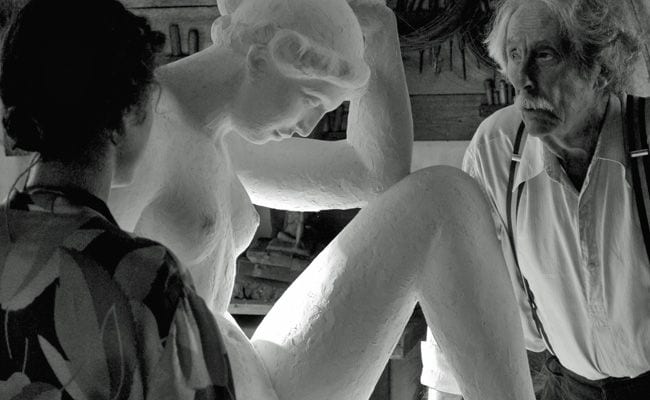
With more than 30 years in the business, Fernando Trueba has proved to be one of Spain’s most versatile filmmakers. From the Oscar-winning romance Belle Époque (which announced the arrival of a nubile Penelope Cruz), to the Oscar-nominated animated film Chico and Rita, he’s dabbled in as many genres as possible, having won Goyas (Spanish Academy Awards) for his work in fiction, nonfiction and animation. The problem with his work is that all of this experimentation seems to prove that he’s still not entirely sure what kind of films he ought to be making.
Trueba’s films all share one thing in common: they have exquisite, almost too-good technical qualities, that is, from an aesthetic point of view they are the equivalent of a new car, all polished surfaces, stunning finishes and similarly they all share a certain air of ordinariness. For all the lovely traits in Belle Époque for example, the film turns out to be so forgettable, that other than for its stars, one finds it practically impossible to remember what the film was all about, and such is the case with his latest; a black and white love song to classic cinema called The Artist and the Model.
Set during World War II, The Artist and the Model takes place in a small French village near the border of Spain, which serves as refuge for a beautiful young, Spanish woman by the name of Merce (Aida Foch), who flees a refugee camp in her home country and is found by Lea (Claudia Cardinale) who believes she will be a perfect model for her husband, an artist called Marc Cros (Jean Rochefort). Lea takes the stranger to her home, as if driven by a moral obligation to satisfy her husband’s artistic needs. We learn that she and her husband aren’t the most traditional family in the region, their eccentricities are filtered by their maid Maria (the always wonderful Chus Lampreave) who informs the young woman that “He’s a good man, even though he’s an artist”.
The shy Merce is then put at the disposal of Marc, who immediately is won over by her beauty and realizes this might be his very last opportunity to dive into a truly sensual experience (with the permission of his wife!) leading to a satisfying dynamic between the old pro, his young model and their two vastly different world views. To say that we’ve seen this story played out in a million different ways, in just as many movies, would be a true understatement, and it’s fascinating to realize that Trueba doesn’t seem to be bothered by how unoriginal the entire premise is.
Instead, he focuses on the film’s visual pleasures beginning with pristine black and white cinematography (by Daniel Vilar) who doesn’t try to emulate the texture of photographs or motion pictures of the era, but instead gives the film the look of a modern, slick perfume ad. He lights Foch the way we see models lit in modern Chanel ads, all smooth surfaces, with little depth and even less personality. This isn’t to say that there isn’t beauty to be found in these details, but only that the beauty in question never truly matches the high ideals of the characters in the film.
For example, Marc explains to his young apprentice how Rembrandt was so talented that he didn’t really care much about other people’s opinions and how once he created a “a masterpiece with no pretenses of being a masterpiece” out of a simple, almost vulgar sketch. It’s ironic that the film has such high standards about art, when it turns itself into something so polished and artificial that it loses all artful purposes and to even think that Trueba was trying to make a statement through these qualities, seems to give the film too much credit.
The film works best when it allows its actors to steal little moments away from the screenplay, like for example watching Cardinale move across the screen or react to Foch’s youth. In the film’s most touching scene, she shyly asks her husband if he desires the young woman, to which he replies “They don’t make bodies like yours anymore”, causing Cardinale’s face to light up with the kind of magic she showed during her own youth. It’s in these moments, when Trueba allows his actors to show that they are artists and not just models in his acting game that the film achieves true beauty.
The Artist and the Model is presented by The Cohen Media Group in a superb high definition transfer that allows the film’s cinematography to shine. Also included in the Blu-ray are a theatrical trailer and an in-depth interview with Trueba who talks about filmmaking with such pleasure and knowledge, that you wish the film in question could justify such passion.


![Call for Papers: All Things Reconsidered [MUSIC] May-August 2024](https://www.popmatters.com/wp-content/uploads/2024/04/all-things-reconsidered-call-music-may-2024-720x380.jpg)



